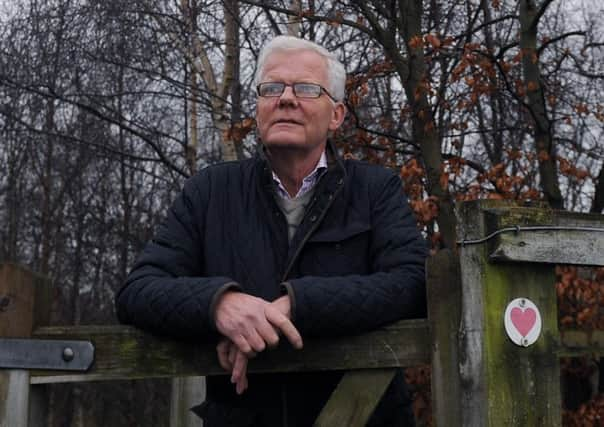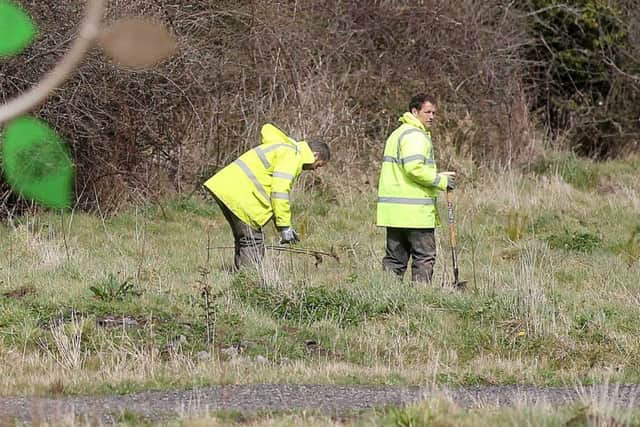Over £600k spent on failed bid to halt major eco threat


Figures show a big surge in the level of ash dieback infections detected, and a conservation expert has warned that it spells “testing times ahead” for the Province’s woodlands.
The incurable and fatal tree disease, spread by fungal spores, was first discovered in the UK in Buckinghamshire in February 2012.
Advertisement
Hide AdAdvertisement
Hide AdAn infection was then uncovered in the Republic of Ireland in October that year, then in Northern Ireland in November.


Northern Ireland’s Department of the Environment, Agriculture and Rural Affairs has now revealed that the cost of the official control and eradication attempts, from 2011 through 2016, amounts to £634,704.
Despite this spending, it said “efforts to eradicate the disease have been disappointing”.
It is now reconsidering its approach to the disease.
It added that it is not possible to say how much it will cost in the long term.


Advertisement
Hide AdAdvertisement
Hide AdWhenever the disease was initially found in Northern Ireland, it was limited to five sites – all newly-planted ones.
The News Letter can reveal that today, just over five years on from the first finding in the UK, 179 recently-planted sites in Northern Ireland have the infection – and that the spread is getting dramatically worse.
Another 15 sites have seen the disease crop up in native trees.
Discovering it in the wider countryside like this is a much more serious development than simply finding it in a batch of saplings within a controlled environment – it means the disease (also known as chalara) has attained a grip in the wild.
There were three cases found in native trees in 2015.
Advertisement
Hide AdAdvertisement
Hide AdBut the level to which the disease has now spread – with these 15 sites covering an area from Fermanagh to Londonderry and Belfast – indicates its spread could be unstoppable.
In Denmark, up to 90% of all ash trees are thought to have succumbed to ash dieback.
Given the species’ prevalence in the Province, the disease would literally alter the landscape if it took hold to a similar extent here.
It has been suggested by a National Trust spokesman that anything up to half the Province’s trees could be ash.
Advertisement
Hide AdAdvertisement
Hide Ad“This is the most common tree in our hedgerows, and a crucial habitat for wildlife,” said Patrick Cregg, director of the Woodland Trust, when becoming aware of the most recent figures.
“The spread of the disease into the wider natural environment seems inevitable, and testing times are ahead.
“With the department’s approach to eradicate the disease currently under review, we keenly await the outcome.”
He has previously warned that infection could spell a repeat of Dutch Elm Disease, which killed about two-thirds of the UK’s elm population within about a decade.
Advertisement
Hide AdAdvertisement
Hide AdDespite the known threat from ash dieback, Northern Ireland had been importing up to 150,000 ash plants annually up until 2012.
An island-wide ban on imports was only finally instituted in October that year – after the infection had already been found in the Republic.
In total, around 100,000 trees – all very young – have had to be destroyed in Northern Ireland since the infection began.
This included the ripping up of a huge swathe of young trees planted outside Whitehead, east Antrim, in 2013.
Advertisement
Hide AdAdvertisement
Hide AdCalled the Diamond Jubilee Wood, the site had been opened in honour of the Queen just one year earlier.
CHARTING THE SPREAD
In 2012 there were more than 1,000 inspections, which found 76 infected sites.
In 2013 there were almost 1,900 inspections, which found another 12.
The roughly 1,300 inspections in 2014 uncovered only another two, and the 1,900-or-so inspections in 2015 revealed just 18.
Advertisement
Hide AdAdvertisement
Hide AdBut any hope that the disease may be contained was misplaced.
There were about 2,700 inspections in 2016 which uncovered another 68 infected sites.
Asked why there had been a surge in infections discovered last year, DAERA said: “This cannot be explained with certainty. However there may be a degree of latency where the disease takes a number of years to express symptoms which can be detected visually.”
The disease causes leaves to die at the top of the tree, new growth to wild, and produces leisons on the bark. Ultimately it kills the host.
If you suspect you have found symptoms, email [email protected] or call 0300 200 7847.